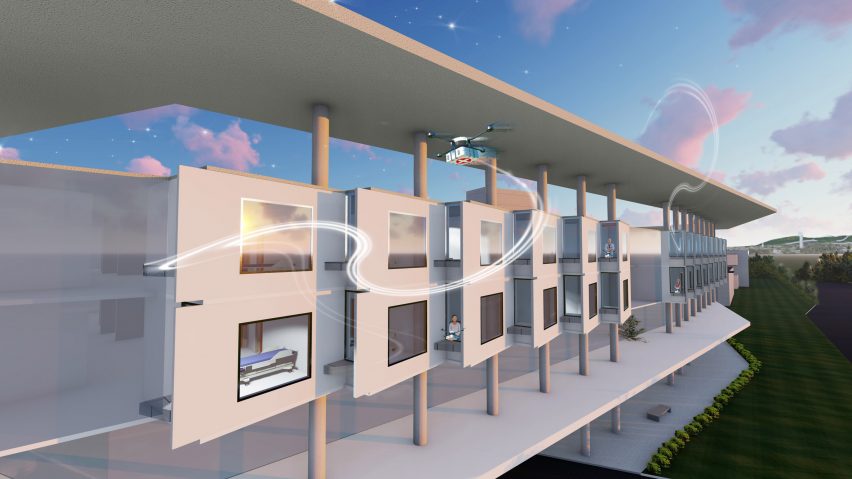Architecture and engineering firm Leo A Daly has proposed building "drone-powered" hospitals in hurricane-prone areas, which could continue operating even when roads are closed or destroyed.
The firm's Miami design office, led by architect Eduardo Egea, designed the concept hospital based on their observations of how healthcare was disrupted in Puerto Rico after Hurricane Maria.
Egea had family on the island, and their experiences inspired him to develop the idea.
"If any of my family members had fallen or had a stroke and needed medical care, there would have been no place to go," Egea wrote in a blog post.
Egea points out that, with roads made unusable by the hurricane, staff, family members and suppliers couldn't always reach hospitals, in some cases leaving patients cut off from care, medication, food and air conditioning.
"When barges finally began entering the port with supplies, there were still cases where they were unable to get those supplies to those who needed it, including the elderly and critical patients who can't move from those facilities," he said.
"I thought, why couldn't we bypass all that and have whatever is in the barges taken directly to the hospitals, and directly to patients?"
Egea's concept solves the problem of this "last mile" of delivery for hospitals. The building design features drone ports on the outside wall of each patient's room, so they can receive supplies direct from the port or anywhere else with drone infrastructure.
Drones docking at the hospital drop their cargo into a net, where it slides through a valve and into a cabinet inside the patient's room. The valve acts as a barrier to the outdoor elements.
To incorporate the numerous drone ports, the Leo A Daly team designed the patient rooms to sit on a slight angle, creating gaps in the exterior facade that Egea likens to louvres or shark gills. The drones dock inside these gills.
Disaster-resilient features incorporated into the design include photovoltaic panels for solar power, and rainwater collection and treatment facilities. The structure is designed to withstand strong winds, projectiles and seismic activity.
Another potential advantage of the design is that it reduces the typical hospital square footage by 15 to 17 per cent – a result of having storage, food production and pharmacy facilities off-site.
Egea argues that these smaller buildings could more easily fit into the communities that need them, and that in this case, less infrastructure equals more accessibility.
"The decentralisation of healthcare services and minimising the infrastructure would allow us to create more healthcare delivery settings embedded in places within communities that couldn't be accommodated before," he said.
He also sees applications for this kind of design outside of medicine, in architecture for hospitality, food distribution, manufacturing and mixed use.
Founded in 1915 by Leo A Daly Sr and today under the leadership of Leo A Daly III, the firm has offices in North America and the Middle East. Healthcare design is one of Leo A Daly's main focuses, as it is for Egea, who joined the company a year ago.
The firm's recent work includes the Intelligence Community Campus in Bethesda, Maryland, an office for 16 American intelligence agencies.

